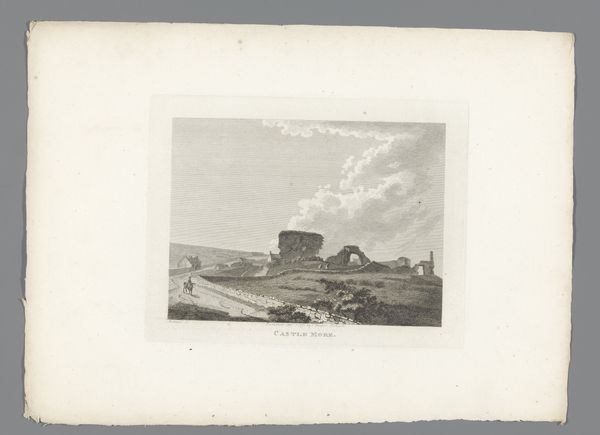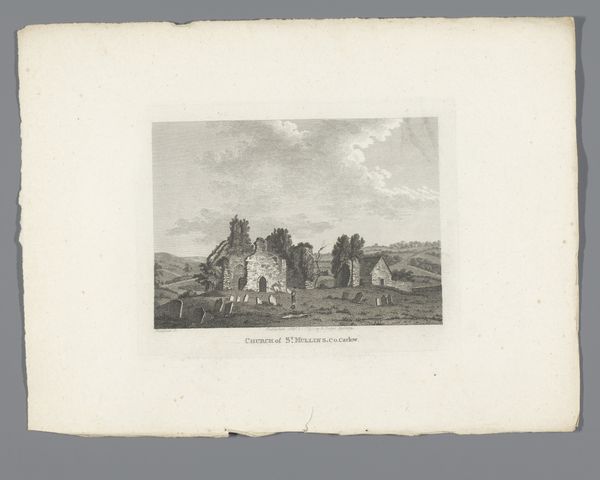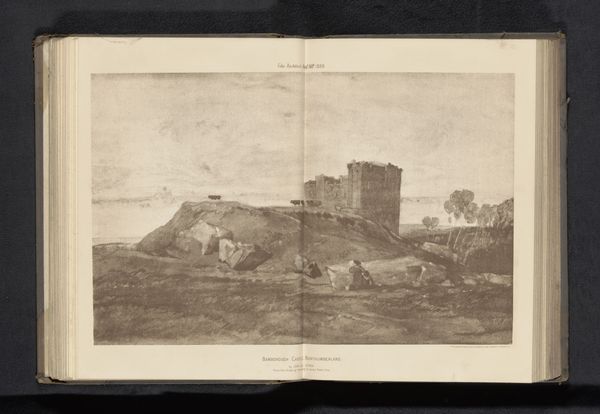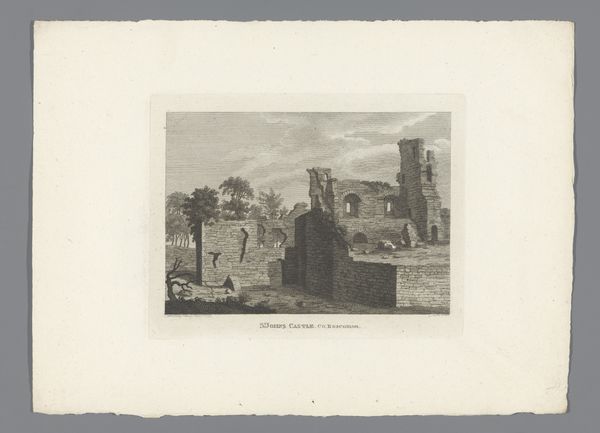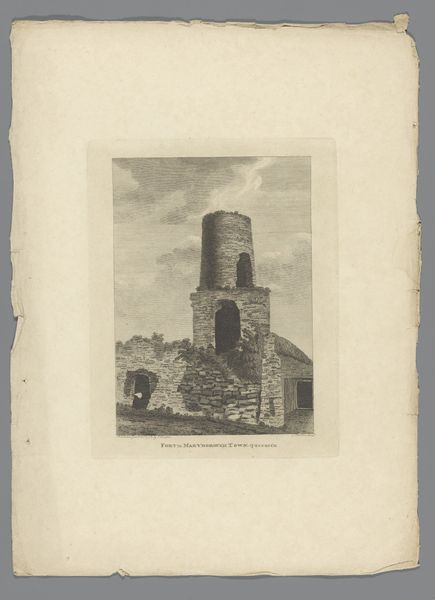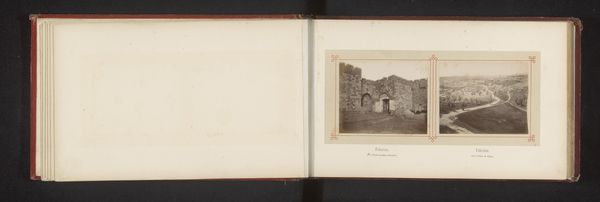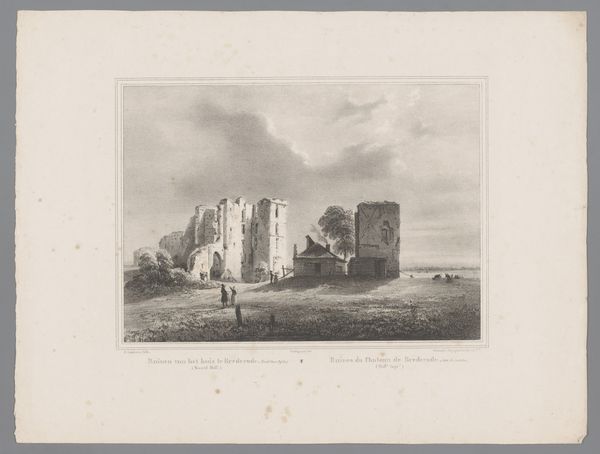
print, paper, engraving
# print
#
landscape
#
paper
#
line
#
history-painting
#
engraving
Dimensions: height 155 mm, width 202 mm
Copyright: Rijks Museum: Open Domain
Editor: Here we have James Newton’s "View of the Ruins of Ballymoon Castle," a print from possibly 1792. It's a simple line engraving, almost stark. I'm immediately struck by how the imposing structure is now just a relic of the past. What sort of stories do you see embedded within it? Curator: I see a commentary on power, Editor. Look at how Newton renders Ballymoon Castle, once a symbol of Norman strength in Ireland. Now, it's depicted as a ruin. Think about what this signifies politically, particularly when viewed through the lens of colonialism and resistance. Editor: That’s a great point. So, you see the decay of the castle mirroring a decline in colonial power? Curator: Exactly. The ‘picturesque’ aesthetic of the time often romanticized ruins, but it’s crucial to analyze *whose* stories are being told, and *whose* are erased in the process. Consider the historical context: land ownership, cultural clashes, and the enduring struggle for self-determination in Ireland. What's represented, and how it's represented, becomes a political statement. Who benefits from a ruined Ballymoon Castle being shown this way? Editor: So the presence of the people in the image isn’t just aesthetic; it underscores a changing landscape, a shift of power back towards the people maybe? Curator: Precisely. Their presence humanizes the landscape and suggests resilience in the face of historical upheaval. What impact can viewing history in ruins have on constructing national and cultural identity? Editor: I hadn't thought of it that way, but you've completely transformed my understanding. I’m now seeing a whole conversation about colonial power embedded in a simple landscape print! Curator: Excellent! It’s about unearthing those buried narratives. Every image has something to reveal if we look close enough.
Comments
No comments
Be the first to comment and join the conversation on the ultimate creative platform.
